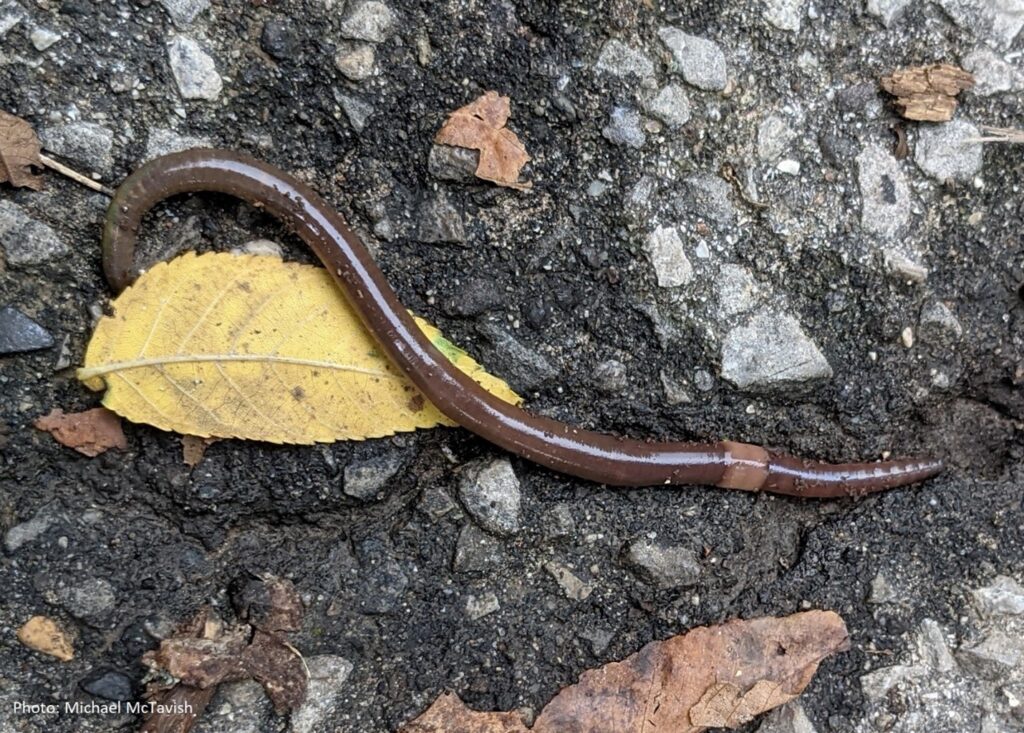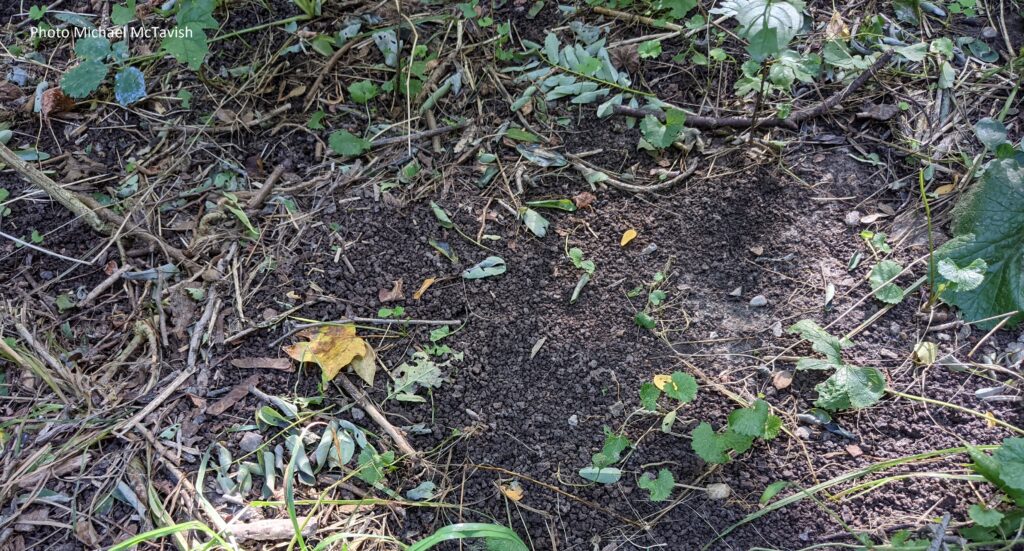
Recently, jumping worm sightings have been reported across southern Ontario, as well as in New Brunswick and Nova Scotia. Horticulture has been a significant pathway of spread for these invasive worms, causing trouble for gardeners in these regions.
What is the issue?
Jumping worms pose a serious threat to forest ecosystems through their modification of the soil. They rapidly consume organic material and their castings (feces) alter soil structure, diminishing its ability to hold water. Jumping worms also change the nutrient composition of the soil, making it richer in nitrogen, which modifies soil bacterial and fungal communities. Changes in soil microbes like fungi and bacteria can affect which plants are able to grow and survive, potentially leading to cascading effects on wildlife. For this reason, it’s important to keep jumping worms out of forest ecosystems.

How to identify a jumping worm
The easiest time to spot jumping worms is between August and September when adults will be at their largest. You can usually find them in the topsoil where they will congregate in large numbers. These worms are quite active and will thrash wildly from side to side if disturbed, a behaviour which has given them their name.
Unlike European earthworm species, which are slimy or squishy to the touch, jumping worms have smooth, glossy skin. They also have a characteristic clitellum (a collar-like band around their bodies) which is white or grey in colour and closer to their head than in other earthworm species. See this visual identification guide for more information.
You can also look for changes in the soil including:
- Quicker than usual decomposition of mulch
- Changes in soil texture. The castings (feces) of jumping worms can resemble coffee grounds, giving the soil a grainier texture

Mustard Pour
If you suspect there are jumping worms in your garden, you can use a mustard pour to bring them to the surface so you can report them.
Follow these simple steps:
1. Mix 1/3 cup of ground yellow mustard seed with 4.5 litres of water
2. Clear a patch of soil and slowly pour the mixture over it
3. Wait for worms to move to the surface to be identified
What to do if you find jumping worms in your garden
Unfortunately, when jumping worms appear in your garden there is not much that can be done to completely get rid of them. However, some physical management options such as manual removal of the worms or heating your soil by sandwiching it between plastic sheets may be effective in reducing the population.
Do not share plants or soil material from your garden with other gardeners if you know you have jumping worms present. This can spread them to other locations and increase the risk of infestation for other gardeners as well as surrounding natural ecosystems.
Any jumping worm discovered should be killed before being disposed of. The quickest method to euthanize adult jumping worms is using isopropyl alcohol. Another effective method is heat, which works on the cocoons as well as the adults. Seal adult worms in a clear plastic bag and leave them in direct sunlight for several days. If you discover jumping worms in horticultural material such as soil, dispose of the contaminated material in a sealed plastic bag and leave this bag in direct sunlight for several days to kill any worms or cocoons. The bag can then be thrown in the garbage. You can learn more by viewing this useful Gardeners Guide by Ontario Master Gardeners.

Boots and equipment
Jumping worm cocoons are small and difficult to distinguish from dirt or soil. This makes them susceptible to inadvertent transport on boots or outdoor equipment. Cleaning your gear before and after moving to a new area, such as while hiking, helps remove the cocoons and keeps jumping worms from spreading. This is especially important if you know you have jumping worms in your garden. Visit the Play, Clean, Go website to learn more about how you can help prevent the spread of jumping worms and other invasive species while enjoying nature.
Reporting
Given their relatively recent spread into Canada, early detection and rapid response (EDRR) is critical to managing the Canadian jumping worm population. You can report sightings of jumping worms, as well as other invasive species you may come across in your garden, at http://www.eddmaps.org or by downloading the EDDMapS application from https://apps.bugwood.org/ on your iPhone or android device. Reports like this help invasive species management professionals by tracking the leading edge of invasions and to determine key areas for management and outreach.
Together, we can help keep our forests safe while still enjoying a bountiful gardening season.
